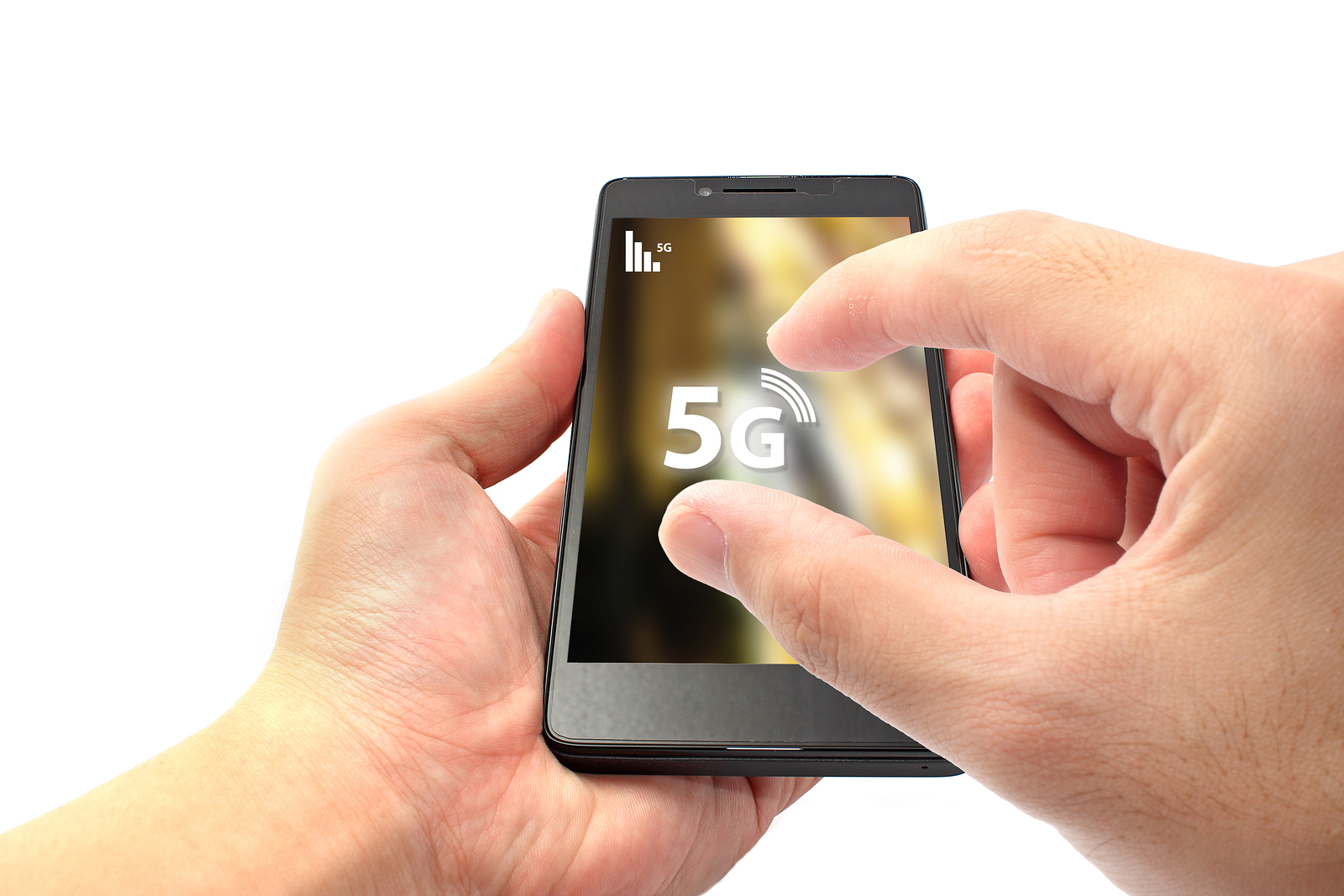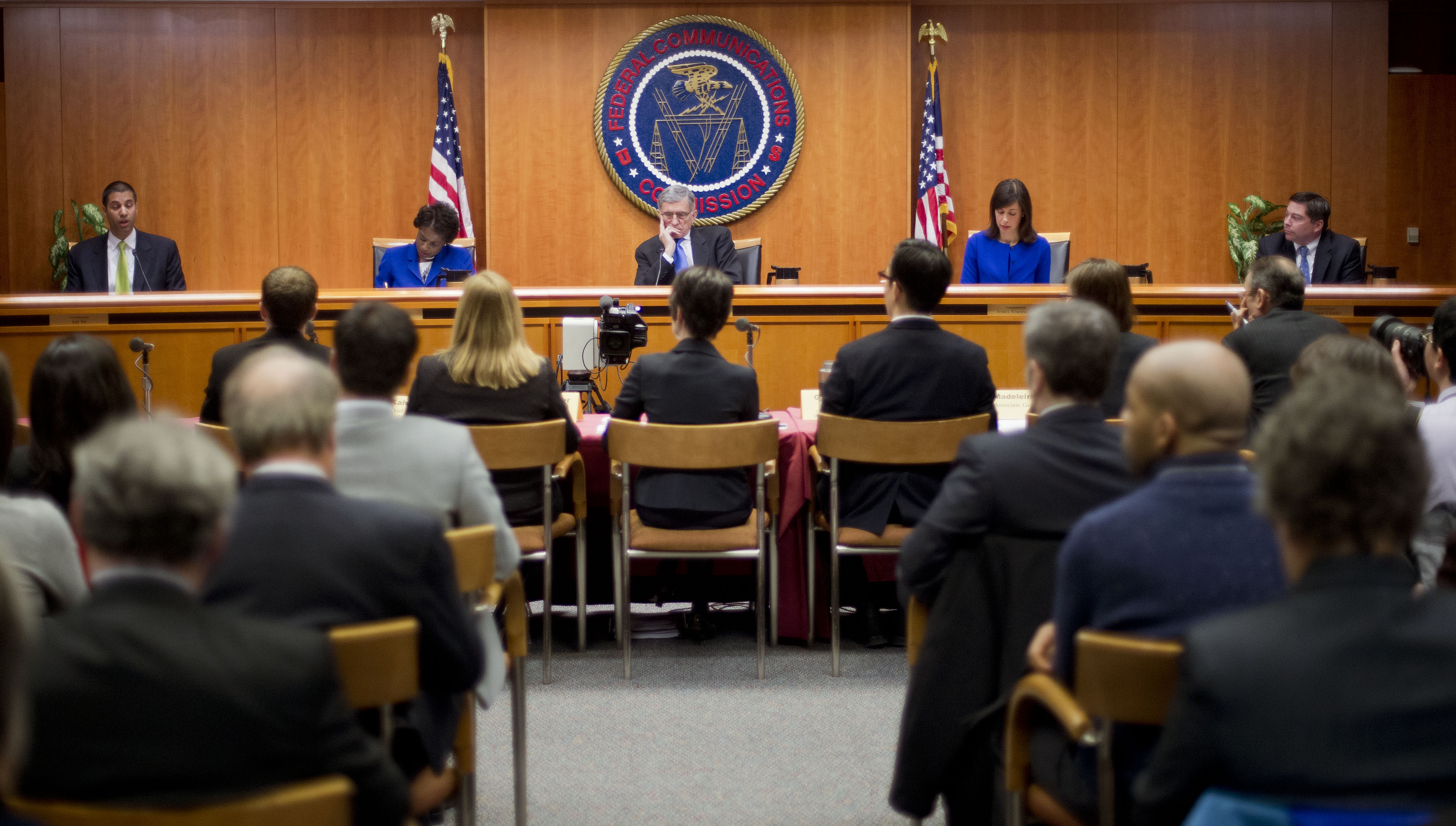What is 5G? Wireless Engineer Explains What America’s Mobile Future Will Look Like

The next generation of wireless networks, 5G, will go far beyond speeding up your Netflix streams or immersing you in virtual reality on the go, according to wireless engineer and consultant Peter Rysavy, who talked with InsideSources to answer the question posed by average smartphone users to FCC commissioners: What is 5G, and what does it mean for the global mobile future?
Note: Responses have been edited for brevity and clarity.
If you asked the average smartphone user what 3 or 4G was, they probably wouldn’t be able to tell you. Can you explain what 5G is, and why it will be such a revolutionary leap forward?
It’s an entirely new wireless network platform, but it’ll coexist with previous generations in the same way that today’s 4G LTE network also supports 3G devices and 2G, which came out in the 1990s. 2G was the first digital network, 3G was the first broadband network and 4G made the first use of multiple smart antennas on transmitters and receivers, capable of bouncing off buildings and so forth — a way to become much more flexible in how we use spectrum. 4G is pretty good for our normal broadband applications, 5G is necessarily going to make it more efficient.
The goal with 5G is to accomplish two fundamental things: one is to make the radio much more efficient and responsive for new machine types of applications, or the internet of things (IoT). With 5G, the goal is to really address every kind of use case we can imagine for devices and machines connecting wirelessly. The other objective is to use smart antennas and advances in radio technology to access spectrum at very high frequency for the first time that were not previously practical for cellular systems. Those are bands that provide much more spectrum than we currently have in use today. Exploiting those bands is going to require entirely new architecture, and I don’t know if we have fully figured out business models to support them.
The expansion of the internet of things including ultra-reliable communications being able to support autonomous vehicles and smart cities, those types of applications — that’s one of the foundational elements. The other is to exploit these new bands to massively increase capacity and throughput performance. So that really is what 5G is.
In a speech earlier this summer FCC Chairman Tom Wheeler said 5G is going to usher in the mobile advent of technology like augmented and virtual reality, ultra-high definition 4K video, etc. with greater speed and less latency, but it sounds like your definition is looking beyond just the average consumer’s smartphone applications.
Those enhanced mobile broadband applications — that’s really doing what we can today with LTE, but just doing it 10 to 100 times faster. Now with lower latency, you don’t necessarily get everything at the same time. If you’re trying to provide somebody a reliable, continuous 25 megabit-per-second ultra-high definition video stream, whether that arrives at your handset a millisecond after it’s sent or 100 milliseconds after it’s sent doesn’t really matter, you’re never going to notice a difference. The ultra-low latency is something you need for ultra-reliable, low-latency communications, and that’s for addressing real-time automation.
So 4G can already handle VR and 4K, 5G will just do it better, but the real revolutionary technology made possible by 5G will be things like autonomous vehicles, smart cities and IoT.
Yeah, I think that’s where you’re going to potentially see the real growth. And that’s what motivates carriers, because for just general mobile broadband they’re not really going to be able to charge anybody more per month, we really have reached the peak of average revenue per user per month. Just because it’s faster doesn’t mean you can charge people more. Because the capacity is higher, more people will be able to cut the cord. Mobile broadband will become the only broadband that a lot of people need. It’s not going to make coaxial or fiber go away, and I really don’t see that growing revenue that much for carriers.
It’s really about the massive deployment of IoT. The International Telecommunications Union’s objective is for 5G to support one million devices per square kilometer, whereas the practical limit for 4G is only one-tenth that amount.
I’ve heard 2020 often mentioned as a general timeline to deploy 5G. When will we start to see some of the applications you’re describing?
That depends on the business approach operators take. Millimeter wave frequencies (those in the upper spectrum bands 5G will depend on) will be restricted to small cell architecture (necessary to continually bounce the otherwise weak millimeter waves to their destination). Those will require deployment of tens of thousands, if not eventually hundreds of thousands and millions of small cells to really reap the benefits across large percentages of the population.
IoT is being designed to require very low data payloads, in return 5G radio will be able to run extremely efficiently from an energy perspective, which will extend battery life. People are looking at a battery lasting ten years or more. If you can run for 10 years on a battery and sell a modem for $2 or $5 dollars, then suddenly all kinds of applications become practical that were not in the past.
Those types of devices will operate at lower cellular bands already in use. Carriers could take those bands, roll out 5G nationwide without that many cell sites as an underlay and emphasize IoT, they could start rolling that out pretty close to 2020. The question is a business one — technically they could do that, but will they be able to get enough revenue from these new IoT applications to justify that investment.
5G from a consumer point of view will provide the biggest bang for the buck for consumers in small cells, but that’s not going to happen until the mid-2020s on any widespread basis. For IoT, you can do that on existing bands, and they may — the FCC’s current broadcast incentive auction does provide an opportunity for carriers to say, ‘Look, we’ve done 5G nationally, and we’re ready to go on all these IoT applications.’ Nobody has really announced what their exact plans are.
Are regulatory agencies like the FCC doing enough to encourage 5G deployment?
The FCC is moving forward, I think, well with 5G. I think the FCC is showing pretty good innovation, forward thinking and reasonable aggressiveness in rolling out new spectrum. As far as things I’m concerned about, I think they’re overly enthusiastic about spectrum sharing. The approach they’re using is massively complex and extremely ambitious. There are some concerns they’ll want to use the same approach in the millimeter wave band before it’s ready for prime time. Another is that their spectrum road map doesn’t provide the long-term view carriers need for investment. Every auction is like an experiment and different from those in the past, and if you asked for a 10-year roadmap, you wouldn’t get one.
Unlicensed spectrum is great for WiFi and local area coverage, but it makes no sense at all for wide area coverage. And yet there’s still this thinking, heavily influenced by Silicon Valley, that unlicensed will solve all of our problems, when in reality you just can’t build large scale, wide area commercial networks based on unlicensed frequencies. Any operator of such a network is just not going to know what the interference situation is going to be, so who’s going to invest billions of dollars in any network when you don’t know how well it’s going to work? It’s just not going to happen.
What impact do you think the FCC’s net neutrality order will have on 5G, now that wireless networks are subject to the same rules as wired?
The ultra-reliable, low-latency communications unique to 5G we talked about can only be achieved by prioritizing traffic. Right now, a literal interpretation of network neutrality is that you are not allowed to prioritize traffic. So if I wanted to send those bits to a car that’s driving around a corner telling it that there’s a pedestrian in the road and that car is going to kill that pedestrian, those bits have to be treated with the same priority as somebody’s YouTube or Netflix stream of Grey’s Anatomy. That’s just ridiculous, simpleminded and doesn’t achieve any engineering-driven result that makes sense.
And the crazy thing is, that could be 1 percent of the traffic. If you wanted to expedite the bits for that autonomous vehicle application, that video user wouldn’t even notice, because they’re the one consuming gigabytes of data. Those low-latency communications might not be consuming anything in comparison. And you could expedite those bits in a way that has no negative impact on other users. That’s the irony of it — people think that it’s a zero-sum game, that if you expedite one person, if one person wins, then another person has to lose. That’s not how it works, you can actually have both parties win just through intelligent traffic management.
I understand you don’t want anti-competitive behavior — an operator’s video stream shouldn’t get preferential treatment over a third-party video stream, that’s fine. Regulate that, but don’t eliminate millions of applications that could benefit from these technologies. Traffic inherently doesn’t have equal priority.
You asked why carriers wouldn’t roll out 5G aggressively for IoT — this could be one reason. If you’re not going to get more revenue from your broadband capabilities, and if the new revenue is from IoT, automation, autonomous driving and all these cool new capabilities, if that’s where the new revenue is, that’s how you justify your investment. But if the policy doesn’t support that, then that undermines the investment.
I think in that regard, the FCC has completely failed. I think they’ve basically given in to politics instead of engineering. It’s not that the FCC doesn’t understand this, the problem is net neutrality just became such a public cause driven by “click to this” campaigns and was dealt with at such a superficial level that we never had an intelligent discussion of it.
In August, Wheeler said ongoing, cybersecurity would be a first consideration for the FCC in building new networks. Does the enhanced capability promised by 5G bring enhanced danger along with it to areas like data privacy or infrastructure security?
There aren’t any known major security failings in 4G technology, LTE has stood up pretty well. But we also know over time, hackers just become smarter and their means of defeating things become more powerful. The goals for 5G are to do better than 4G, and so the areas that come into the security equation include subscriber authentication and user privacy as far as encryption of the radio link — that we have in 4G.
Some of the things we don’t have that could be put into 5G are protection against denial of service attacks. For example, if you have a botnet that infected millions of cellphones and they wanted to suddenly bring down a network through malicious behavior, that could be the type of thing you could protect against better in 5G.
There’s stuff that’s specific to the radio. Yes, with 4G, we have good encryption of the link, with 5G, it can be that much better. We could have mutual authentication between the device and network. Right now, a device can easily think it’s connecting to a network, but it’s not if it’s connecting to something like a Stingray device or somebody’s malicious network. People are looking at whether that can be improved.
A lot of operators are offering virtual private networks for a lot of enterprise applications, giving users the ability to access private information from their device over a secure, private connection that can’t be hacked into rather than going over the internet like you and I do to get to our mail servers. So there are layers in network connectivity options that offer more security than operators have today, which I think will happen with 5G.
You mentioned the FCC’s ongoing broadcast incentive auction earlier. The FCC has touted the auction as a big part of encouraging the deployment of 5G. Since the first round of bidding by wireless carriers concluded last month at just over $20 billion — well below the agency’s target of more than $80 billion — some have suggested carriers exaggerated claims about running out of spectrum. How important is repurposed broadcast spectrum to 5G?
The concern of running out of spectrum is legitimate. It doesn’t take a very complicated mathematical analysis to show that any wireless network has extremely finite capacity. If you do the math, just three of four users streaming Netflix in high definition consume the entire capacity of a cell sector, which could be a number of blocks in a city. The average amount of data consumed by each user every month keeps going up, and will keep going up, there’s no question.
You can solve capacity by more cell sites, more spectrum or better technology, but LTE is already running about as efficiently as you can. Some of the ways of really improving efficiency aren’t practical until you get to really high frequencies, such as millimeter wave.
You wouldn’t have had operators spend $40 billion-plus in the recent AWS-3 spectrum auction unless there was a need for spectrum. That is just conclusive proof. The disconnect is that carriers need spectrum for capacity — the 600 megahertz band (spectrum currently being auctioned) is a coverage band, it’s not a capacity band.
600 MHz is a frequency you want when you want to provide broad coverage and deploy the smallest number of cells possible to get a national footprint. It’s not what you want to deploy in an urban area to augment capacity, and I think a lot of the carriers — AT&T and Verizon — they already have a decent chunk of spectrum in the 700s, so some 600 MHz might be good for them because then they could get some new spectrum and do a national underlay for 5G, but that spectrum doesn’t really address the need for capacity. And I think maybe that’s why you’re not seeing as much initial enthusiasm or as many billions of dollars being put forth in this forward round of the incentive auction. It’s kind of a myth that everybody wants low-band spectrum.







